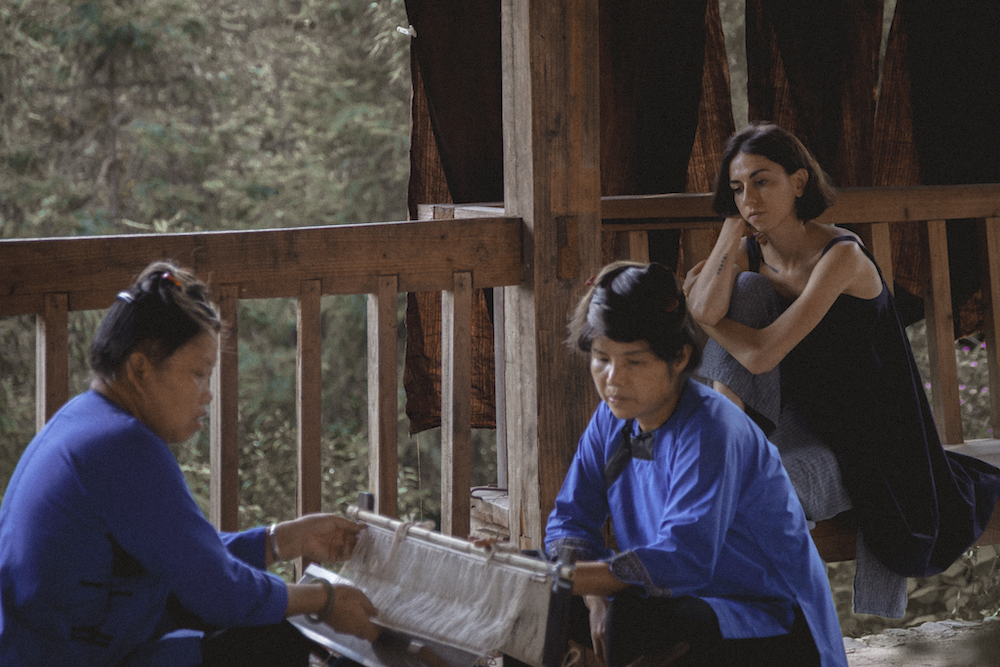Deyi Living is an ethical design studio rooted in Chinese ancestral wisdom, preserving traditional indigenous craftsmanship and textile heritage through contemporary design, art, and holistic experiences. Founded by Adriana Cagigas, Pauline Ferrières, and Zhang Xing, Deyi Living closely collaborates with female artisans from Guizhou Province in China, where ancient textile techniques such as indigo dyeing, batik, and fabric pleating are at risk of extinction. Today, we spoke with Adriana Cagigas, designer, textile researcher, and co-founder of Deyi Living, to learn more about her vision of design as a bridge between cultures, her commitment to preserving textile heritage, and the challenges and lessons learned from working at the intersection of art, fashion, and sustainability.
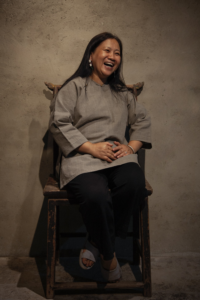
What circumstances led you to create Deyi Living, and how did the initial project development process unfold?
It was a chance encounter via social media. Although I’m not very active on these platforms, sharing your work and vision can lead anyone, anywhere in the world, to reach out to you to participate and develop collaborative projects. This was the case with Zhang Xing and Pauline, my partners and companions in this venture. A serendipitous contact on a social network and a physical meeting confirmed that we shared values and personal and professional life goals: to create dynamics, spaces, and encounters through design that can generate change in society.
Deyi Living collaborates with indigenous women artisans to promote their social and economic development. How would you describe the impact this project has had on their lives and communities?
The impact has not only been economic; I believe the most beneficial aspect, not just for them but also for us, has been the mutual learning and growth. In a project of this nature, this is undoubtedly the most valuable element: those intangible aspects that some people bring to others and how human growth and development unfold day by day. After four years of working together, none of us is the same person; we have grown and evolved through our ongoing collaboration. We are more of a family than a working group.
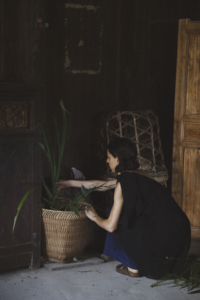
Working with indigenous communities and such rich cultural traditions must be rewarding, but also challenging. How do you manage cultural differences and achieve successful collaboration?
For my part, being a very goal-oriented person, this has sometimes been complex, as the timing, requirements, and vision of Chinese culture are very different. I have sometimes found it challenging to accept their rhythms, but it is this difficulty that fosters the most learning for me, helping me to evolve. Understanding the cosmovision of other groups is a gift I experience in this life, and because of that, I can identify areas of my being that have room for improvement.
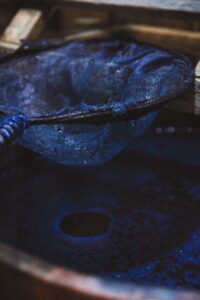
What message would you like people to take away when discovering the work of Deyi Living and its impact on indigenous communities?
I would like anyone who comes to me or to the project to absorb our courage and our passion for wanting to create dynamics that are more coherent with groups and the environment… That they see that, as difficult as it may seem, the world is simpler and more nourishing when bonds and communications are established among the various actors involved in any process. And above all, that in the textile industry, we can still generate new models of management, production, and consumption that should not be based on waste, but rather the opposite. Textiles, as a primitive language of the human community, have the power to create bridges, establish meaningful relationships, and develop socially impactful projects.
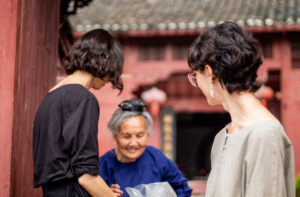
How do you perceive the evolution of sustainable design and the role projects like Deyi Living will play in the coming years?
I have always wanted to develop Deyi from a more experiential and educational perspective. I believe that is our short- and medium-term goal. We want to focus on generating benefits in a balanced way across all areas of sustainability, but with an emphasis on generating knowledge and skills rather than simply exchanging material goods. The goal is to find a balance between the entire material textile ecosystem and the immaterial space that allows all of this to exist.
In addition to this future vision, since last summer we have been developing immersive learning experiences, both with students from the disciplines of design and art, as well as with professionals and creatives who want to integrate new technical knowledge related to textiles. The goal is to create links and interconnections between different ethnicities, cultures, disciplines and generations, and to promote design projects and products that are much more coherent with global needs and generate positive social impact. Learning from the Earth to regenerate urban social ecosystems that do not function properly, this is our present work with future projection.
Words : Adriana Cagigas / Sofía Yang Mao
Photos : Adriana Cagigas
More information on sustainable and ethical fashion in our magazine

